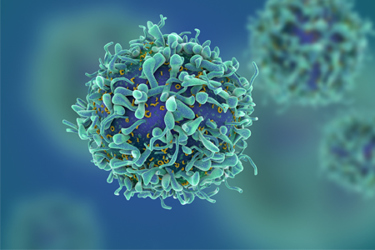Detection Of Rare And Low-Expressing BCMA CAR-T Cells With BD® 1-Step CAR Detection Reagent
By Joseph Cantor, Arthi Kannan, Gary Yao, Omar Bazirgan, Wei Fan, Megan Parwana, Christian Carson, and Shilpi Verma, BD Biosciences

Flow cytometric identification and analysis of CAR-expressing cells is applied in many stages of early drug discovery and translational research. However, surface CAR protein expression can vary widely, making accurate identification and flow cytometric analysis of CAR+ cells difficult. BD® has developed 1-step reagents for resolving CAR-expressing cells using flow cytometry that are compatible with multiple fluorochrome options to accommodate varying panel needs and instrument constraints. Here, we show that our CAR Detection Reagents specifically stain CAR-expressing CHO, Jurkat CAR-T, and primary human CAR-T cells. In addition to in vitro cell culture settings, our CAR Detection Reagents performed well on lysed whole blood and in simple multi-color panels and showed compatibility with intracellular staining workflows. CAR-T cells added to donor PBMC were detected by this reagent at <0.1% proportions, showing potential value in research studies on CAR-T persistence. Importantly, background staining was minimal on CAR-negative blood cell populations, and CARlo cells could be resolved from negative cells. Overall, our data indicate that these new reagents address the challenges of CAR+ cell detection and will empower cell therapy research.
Compared to traditional linker antibodies, the BD BCMA- CAR detection reagent offers high specificity and compatibility with dual and tandem CAR designs. With four direct fluorochrome conjugates, it provides unmatched flexibility for flow cytometry assays. The BD(R) BCMA-CAR Detection Reagents provide highly competitive performance, with excellent rare cell detection and sensitivity to low CAR expression. It also boasts a long shelf-life of up to 1.5 years at 4°C and broad compatibility with various buffers, including lysis, permeabilization, and transcription factor buffers for complex intracellular workflows.
Access the full poster to learn more.
Get unlimited access to:
Enter your credentials below to log in. Not yet a member of Bioprocess Online? Subscribe today.
